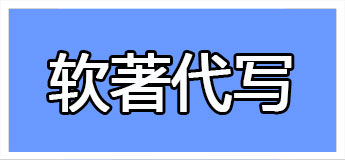
Software Copyright Protection: An Overview
As technology continues to play a fundamental role in virtually every aspect of modern life, software has become one of the most essential tools for individuals and organizations alike. From personal computers to smartphones and home appliances, virtually all electronic devices rely on software to function. Given the importance of software in today's world, it is crucial to understand the legal framework that governs its creation and use. One such framework is software copyright protection, which is designed to safeguard the rights of the creators of software.
Software copyright protection refers to the legal right that creators of software have to control and monetize the use of their software. The law treats software as a unique form of intellectual property that is subject to the same protection as other forms of intellectual property, such as books, music, and movies. The purpose of copyright protection is to give software developers an incentive to invest their time and resources in creating software, as they can generate income by licensing or selling their software without worrying about competitors taking advantage of their hard work.
The primary mechanism for software copyright protection is the registration of software with the relevant government authorities. In the United States, for instance, software creators can register their software with the Copyright Office at the Library of Congress, which offers protection under federal law. once registered, the creator of the software has exclusive rights to reproduce, distribute, and modify the software, among other things.
One of the benefits of software copyright protection is that it affords software creators a means to legally enforce their rights in court. In the event that a third party infringes on their copyright, creators can seek damages and other remedies from the court, including injunctions barring further use of the software. This helps deter potential infringers from stealing software and encourages them to obtain proper licenses or permissions before using the software.
It is worth noting that software copyright protection is not unlimited. For example, the so-called \"fair use\" doctrine allows limited use of copyrighted software for purposes such as research or education without the need for permission or licensing. Additionally, reverse-engineering of software is permitted in certain circumstances, such as when a programmer is attempting to create software that is compatible with another program or when security researchers are attempting to determine vulnerabilities in software.
Despite its importance, software copyright protection is not without controversy. Some critics argue that it places too much power in the hands of software creators and inhibits innovation by restricting the ability of others to use and build upon existing software. Others argue that copyright protection is necessary to encourage software innovation and protect the intellectual property rights of creators.
In conclusion, software copyright protection is an essential means of safeguarding the rights of software creators and fostering innovation in the tech industry. While it is not without criticism, it remains a crucial component of the legal framework that governs the creation and use of software. As technology continues to evolve and play an even greater role in our lives, it is important to continue to refine and adapt this legal framework to ensure that it remains effective and equitable for all parties involved.
上一篇:船综合院软件著作权:集科技和智慧于一身的全方位服务下一篇:坑梓街道软件著作权代理(【揭秘】坑梓街道软件著作权代理:权威认证,快速办理,助力企业成长)
软件著作权说明书代写
一、《申请表》《说明书》《源代码》3个文档
二、300元/案子,3天内交付
三、电话/微信:139-9853-9835




